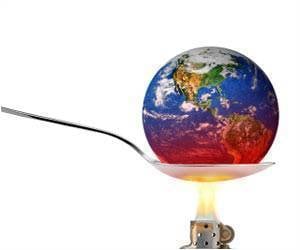
Massive ice sheets grew across the Antarctic continent, major animal groups shifted, and ocean temperatures decreased by up to 5 degrees.
But studies of how this drastic change affected temperatures on land have had mixed results. Some show no appreciable terrestrial climate change; others find cooling of up to 8 degrees and large changes in seasonality.
Now, a group of American and British scientists have used a new chemical technique to measure the change in terrestrial temperature associated with this shift in global atmospheric CO2 concentrations.
Their results suggest a drop of as much as 10 degrees for fresh water during the warm season and 6 degrees for the atmosphere in the North Atlantic, giving further evidence that the concentration of atmospheric carbon dioxide and Earth's surface temperature are inextricably linked.
The transition between the Late Eocene and the Oligocene epochs (between 34-33.5 million years ago) was triggered in part, the researchers said, by changes in the concentration of atmospheric CO2 that enabled ice to build up on the Antarctic continent.
Advertisement
But much of what is known about this time period's climate comes from cores drilled deep in the ocean, Hren added.
Advertisement
Now, Hren and his colleagues have used a recently developed "clumped isotope thermometer" to examine terrestrial fossil shells from this time period. The team collected fossilized snails from the Isle of Wight, Great Britain, and looked for not just the kind and number of carbon and oxygen isotopes present, but how they were bound together.
What makes their results so important, said Hren, is that it's further evidence that CO2 is linked not only to climate by way of the vast oceans and their temperature, but by terrestrial temperatures, too.
"It gives further evidence of the close links between atmospheric CO2 and temperature, but also shows how heterogeneous this climate change may be on land," he added.
The research appeared in Proceedings of the National Academy of Sciences.
Source-ANI









